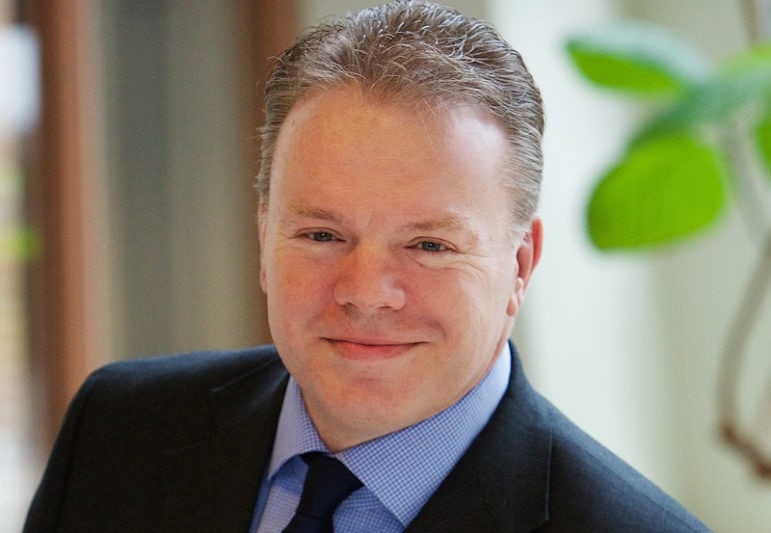Head of Transaction Services, ING, Mark Buitenhek, joins the speaking faculty for Open Banking Expo, Amsterdam on 4 October. Join Mark in his afternoon Future Focus session “Building an innovative ecosystem”, as he explores what an innovative ecosystem of traditional payment providers and fintechs look like, what are the successful examples and what is everyone’s role in the chain.
While some banks have barely dipped a toe in the Open Banking pond, ING has jumped in and is changing its entire operation in anticipation of the future. Joe McGrath speaks to Mark Buitenhek, the company’s head of transaction services…
When it comes to speed of adoption, few European brands have moved to embrace the opportunities from Open Banking like ING.
Structural integrity
In April, the company announced its latest commitment, launching three new APIs to the French consumer banking market. The bank has been keen to make plenty of noise about its collaboration programme with European fintechs – while some of its competitors have opted for a more cautious approach, concerned about the implications for market share.
But for ING, it goes beyond the spirit of co-operation. It sees Open Banking as the dawn of a new era, where the very corporate structure of banking institutions will have to change to adopt to the growing and changing demands of customers.
“We firmly believe that banks of the future will look completely different,” Mark Buitenhek, head of transaction services at ING, tells OBE Magazine. “We embrace an open platform strategy. Having Open Banking capabilities or API-based capabilities is the only way forward,” he explains.
The ING strategy is built upon the expectation that customers will eventually embrace multi-channel financial services through brands with which they have a close affinity.
“I have been in banking for 30 years, says Buitenhek. “I started when we had paper and cheques. It is important that we keep looking outside of our industry for ideas. Talk to tech companies who are ahead. Speak to companies in China, in Asia.”
Buitenhek says he has encouraged his colleagues to watch how products and services have evolved in other sectors, outside banking, as these may have clues to what tomorrow’s bank will look like.
“Don’t just stay within the bank and understand banking products. Have an eye on what is happening outside of your world,” he says.
Overcoming market challenges
However, Buitenhek warns of a number of market challenges facing established businesses.
“For a very long time, the banking industry has worked with developing everything on our own, standardised and in large groups. It has been very successful but the way we are now able to connect with each other has dramatically changed.
“It is changing that attitude and that mindset. It is a completely different way to look at the world. We tackle this by creating a more agile organisation,” he explains.
ING has created multi-disciplinary teams throughout the organisation with lots of autonomy, which Buitenhek says enables them to mimic what start-ups are doing.
He cites legacy issues as a challenge facing banks as they work to create a more flexible architecture that can accommodate APIs, as well as the regulatory environment and cyber security.
“We are struggling with all these elements, as are regulators. Who is under the supervision of a regulator? If you are working with a fintech, you will immediately move to a public cloud. In some countries, regulators don’t permit the use of public clouds,” he says.
“Those are the kinds of obstacles that you need to overcome. It is also a fine balance with the customer experience. You cannot afford any disruption right now.”
Steering future regulation
PSD2 was introduced at a time when innovation in the banking sector was stagnant. Opening it up to fintechs and third party businesses would allow legacy banks the opportunity to innovate and compete with the rising challengers.
However, Buitenhek argues that breaking open the industry in this way, while institutions remain liable for data, has its own issues.
He questions: “How do you ensure there is a secure world? If you think of an open and blurry world where everything connects with everything – how do you regulate that? The balance between customer experience, one click, and security is getting much more attention right now.
“The whole debate about whether your card is being listed on a website somewhere, how do you protect it? Things are not being stolen at banks anymore. How do you protect against that? I can see all these things happening at the same time. It will take some time to find that balance and come up with regulatory protection that makes sense.”
Consumer benefit
In spite of the advances made in the Open Banking sphere, particularly in the UK, consumers have been slow to embrace what is on offer. According to Buitenhek, it will take time for them to make the move to new services, or from incumbent institutions which have spent years winning their trust.
“What we do see is that if you bring something that adds real value, companies like Revolut and TransferWise will find a place where there is great friction in the products that banks are offering,” he says.
“It is just waiting for someone to step into this space. Our vision is 20 per cent to 30 per cent of the market will start using those services, but it will take some time.”
Citing recent studies conducted by both ING and Mastercard which supported the hesitance among the majority to switch away from a trusted bank, Buitenhek highlights that younger people are far more willing to bank with a ‘non-bank’.
“The only thing that incumbents can do is prepare themselves and become so good that people don’t want to move,” he adds.
“The incumbents who are still licenced have the trust of the public and have the best starting point because of the distribution. But challengers are trying to become banks. They understand that not having that banking licence is a big disadvantage.”










